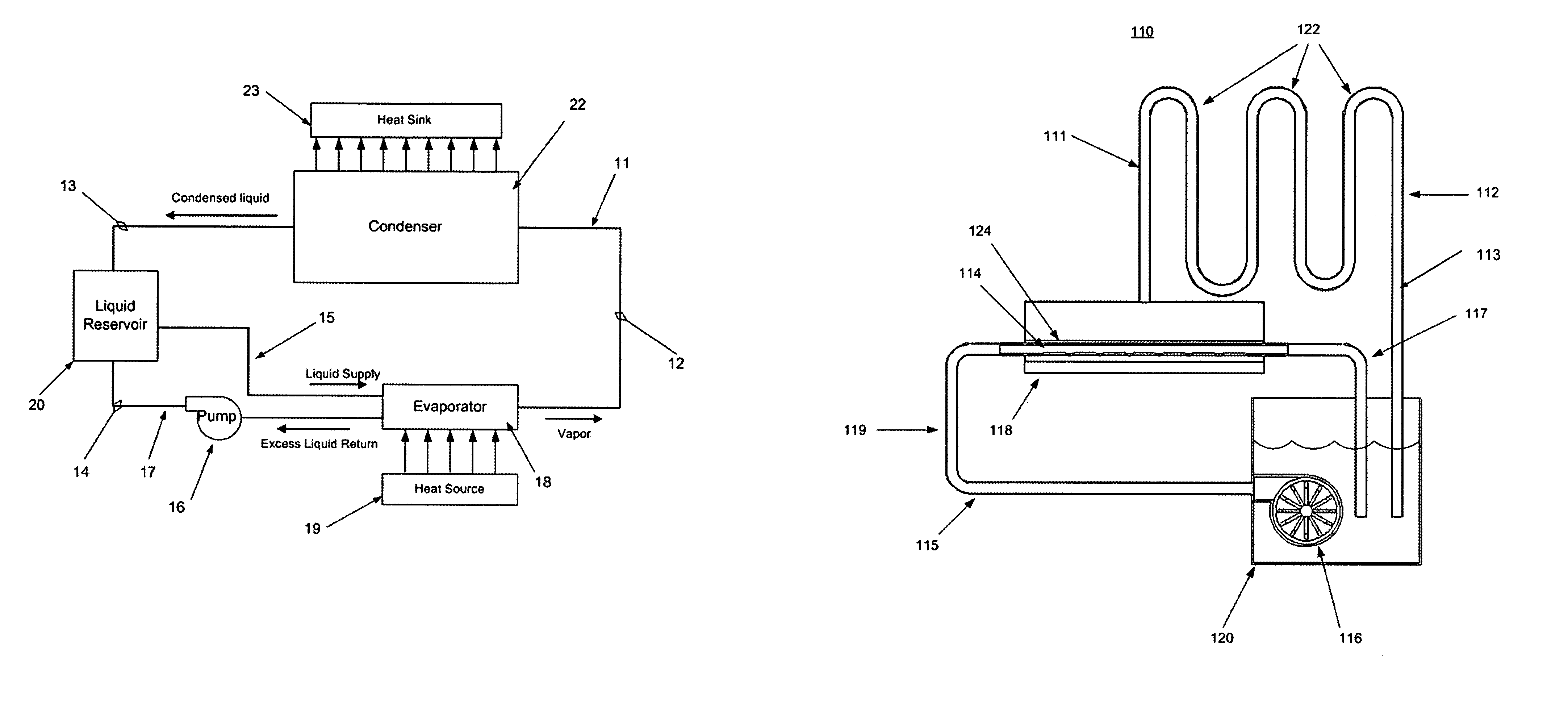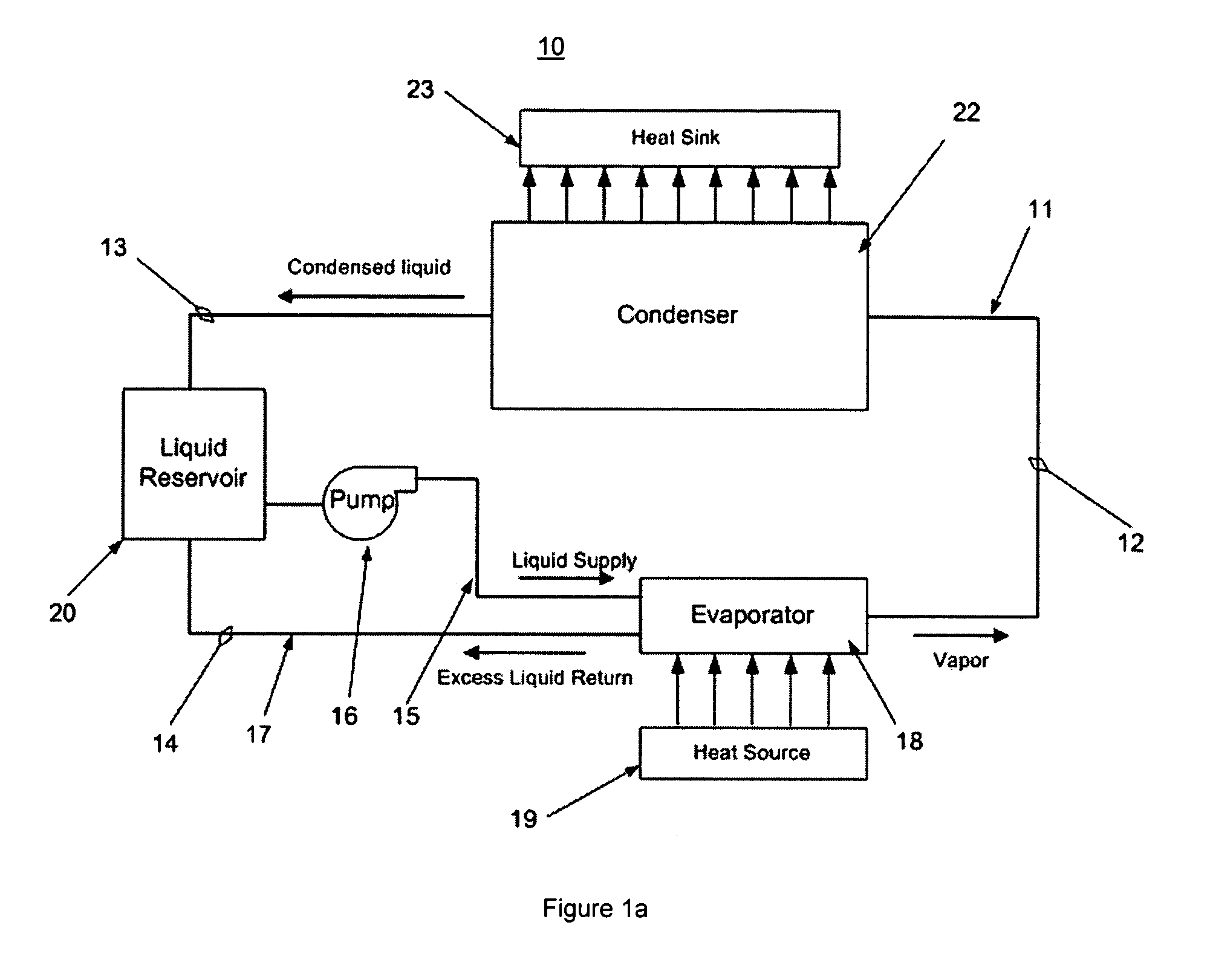Hybrid loop cooling of high powered devices
a technology of high-power devices and loops, applied in the direction of semiconductor devices, lighting and heating apparatus, basic electric elements, etc., can solve the problems of limited heat transport capability and heat carrying distance, heat pipe operation, and the capillary limit of a heat pipe, so as to facilitate the compact flow arrangement and reduce the probability of pump cavitation
- Summary
- Abstract
- Description
- Claims
- Application Information
AI Technical Summary
Benefits of technology
Problems solved by technology
Method used
Image
Examples
Embodiment Construction
[0043]As used herein, the term “hybrid loop” refers to the heat transfer loop system that includes a primary passive two-phase flow segment and a secondary actively pumped liquid flow segment. The terms “bonded powder”, “powder wick” and “porous wick” refer to any means of bonding metal, ceramic, glass or plastic powder or fiber materials together to form a porous wick structure, including, but not limited to, sintering, diffusion bonding, hot pressing, brazing, soldering, and bonding with plastic or glass. The term “condenser” means a portion of a two-phase device or a discrete component connected thereto, in which a vapor-phase working fluid condenses to liquid-phase as the latent heat of vaporization is transferred to an associated heat sink. The term “evaporator” means a portion of a two-phase device or a discrete component connected thereto, in which evaporation of a liquid-phase working fluid occurs as the fluid absorbs heat from an associated heat source.
[0044]FIG. 1a illustr...
PUM
 Login to View More
Login to View More Abstract
Description
Claims
Application Information
 Login to View More
Login to View More - R&D
- Intellectual Property
- Life Sciences
- Materials
- Tech Scout
- Unparalleled Data Quality
- Higher Quality Content
- 60% Fewer Hallucinations
Browse by: Latest US Patents, China's latest patents, Technical Efficacy Thesaurus, Application Domain, Technology Topic, Popular Technical Reports.
© 2025 PatSnap. All rights reserved.Legal|Privacy policy|Modern Slavery Act Transparency Statement|Sitemap|About US| Contact US: help@patsnap.com



